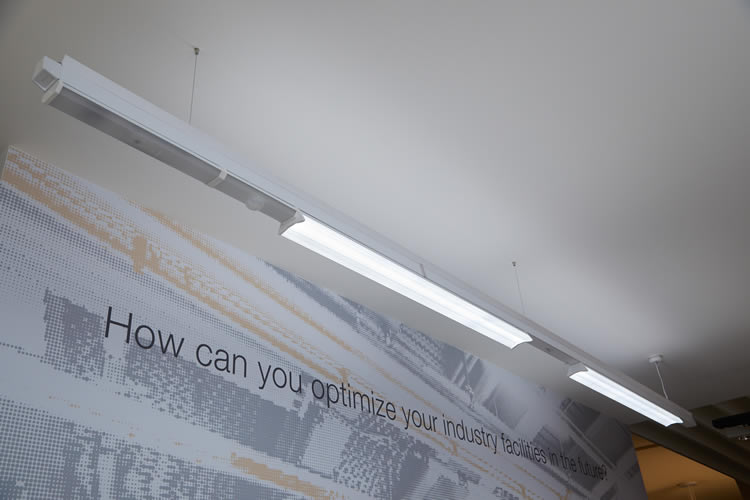Technical Writer at 5G.co.uk
Sarah Wray is a technical writer with over 10 years' experience writing about technology, including telecoms, smart cities, data, IoT, aerospace, and more.

Nokia Bell Labs and Osram are working together to explore how ceiling lights fitted with radio modules could be used as the foundation of affordable indoor 5G radio networks.
The companies’ proposed solution looks to make it easier for operators and building owners to provide good indoor connectivity at a time when demand for it is set to surge.
One of 5G’s challenges is that although its higher frequencies carry information faster, they don’t carry it as far as lower bandwidths. Many of the new services that 5G supports will take place indoors at venues such as offices, hotels and conference centres, transportation hubs and sports stadiums, and estimates predict that indoor capacity will increase by 800% over the next five years.
This will require lots of multiple input and output (MIMO) antennas to boost signals and capacity. Using common infrastructure such as lighting could help because light fittings are already typically installed close together in buildings.
The light fittings in offices and factories can be hooked up to a light control and network management system. This system is then connected to the building’s communication access line. The distribution of the lights avoids the issue of ‘dead zones’, which are common in buildings.
The partners say that this solution will perform better than the alternative option of using Wi-Fi access points and repeaters. Although adding radio modules will make the lights slightly more expensive that conventional fittings, overall the costs will be lower, they add. In addition, the new lights can also be used to collect sensor data to create further insights for businesses. The ‘radio luminaires’, and the data they generate, can be integrated into Osram’s Lightelligence IoT platform.
The Nokia Bell Labs and Osram solution is being presented at this week’s Brooklyn 5G Summit.
Thorsten Müller, Head of Innovation at Osram, said: “Our office and industrial luminaires are already networked for remote control.
“In this R&D project, we equipped them with special broadband radio modules, allowing mobile devices like cell phones and laptops to connect to the luminaire network and transmit data.”
This isn’t the only connectivity innovation using lights. Another emerging area is Li-Fi, or Light Fidelity.
Where Wi-Fi uses radio waves to transmit data, Li-Fi uses visible light from LED lightbulbs. In tests it has demonstrated speeds up to 100 times faster than Wi-Fi.
Li-Fi’s use is not widespread yet, but commercial applications are growing. It has limitations, though – it can’t travel through walls, for example, so it won’t replace Wi-Fi, 4G or 5G but it’s one to watch as a key complementary technology.
Lyca Mobile’s cheap Pay As You Go deals include roaming and international minutes.





